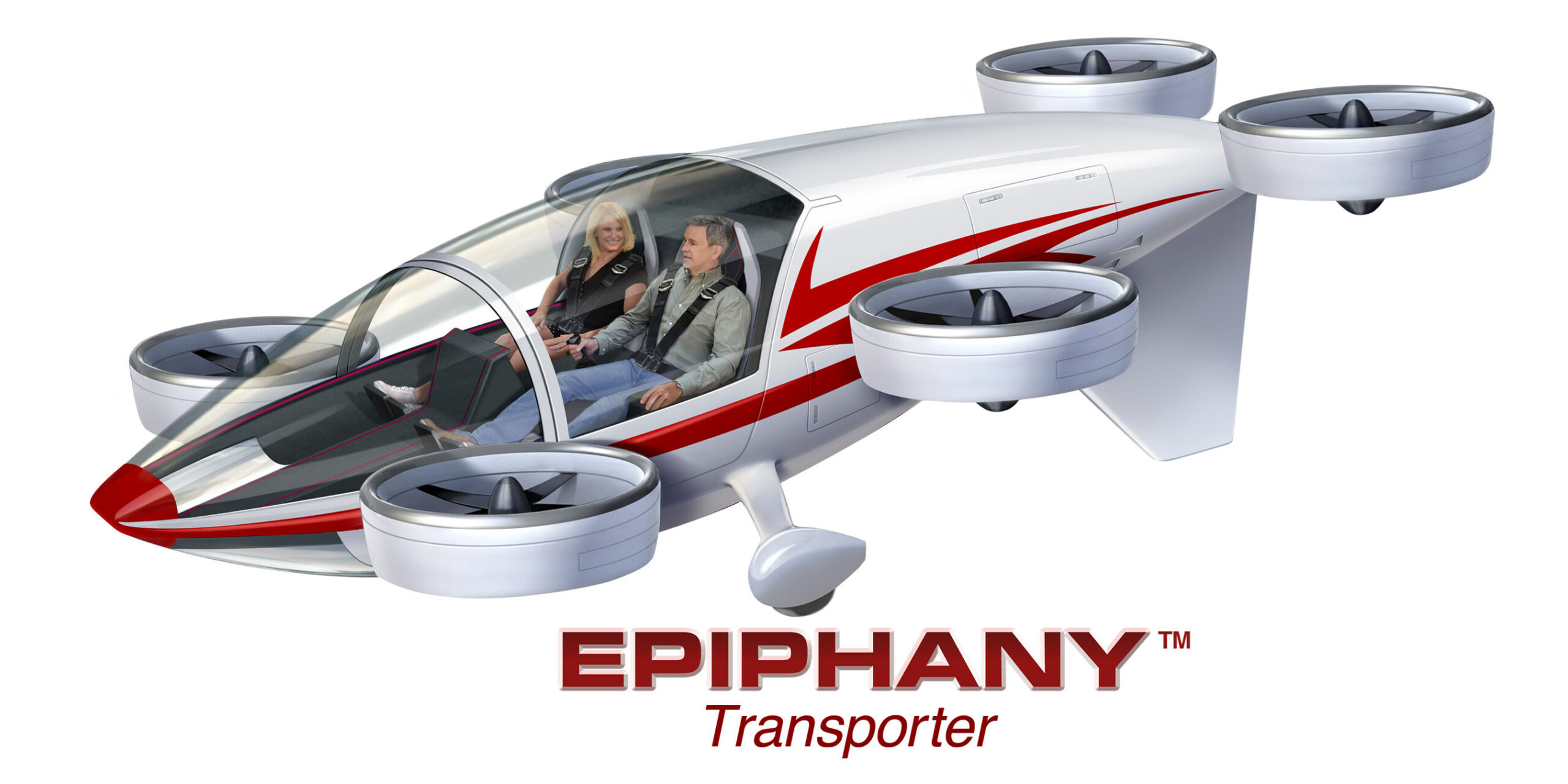The planned joint-venture in the Urban Air Mobility space will complete current development work on the Epiphany Transporter, which has recently achieved crucial preliminary design review, then certify the aircraft under the FAA’s new and friendlier LSA (Light Sport Aircraft) category.
In lieu of long, burdensome wings, the compact advanced, door-to-door vehicle configuration vaunts morphing, dual-mode, tiltable, ducted thrusters enabling it to hover like a helicopter, and attain very efficient high-speed cruise flight like an airplane.
Key to its impressive utility and vast potential commercial appeal is its predicted 300+ mile normal range; exciting 160-mph top cruise speed; and exceptionally quiet, neighbor-friendly, sound. The craft can accommodate two people, their luggage, plus golf clubs!
With its auto-stabilized and distributed propulsion, it is Intended to be simple and safe to operate, about the size of a Tesla Model ‘S’ automobile, and it will fit into a standard one-car garage with its thrusters folded up.
The normally unspoken, gorilla-in-the-room, problem with most other one- and two-place personal eVTOL aircraft under development is their very limited useful range of 100 miles or less, and MRR (Mission Radius Range) measured in tens of miles.
MRR being the range from point of departure, to point of destination, then back home, without recharging! Having adequate MRR is crucial due to the lack of existing infrastructure to provide suitable and functioning destination recharging units.
The Epiphany Transporter’s normal (point-to-point) range of over 300 miles, using today’s off-the-shelf batteries, provides a MRR of over 140 miles allowing it to access destinations that far away, land, takeoff, and return home, all without the need for recharging!
Originally developed under a $5.1 million DARPA grant, the NASA-proven, patent-pending, ducted thrusters have undergone over a quarter-century of refinement through full-scale flight testing in wind tunnels and several prototype manned vehicles.
Michael Moshier, Inventor and Chief Design Engineer, “We have every reason to believe in the ability of our proprietary, field-proven, ducted thrusters and leading-edge vehicle design, to perform in flight as expected”.


